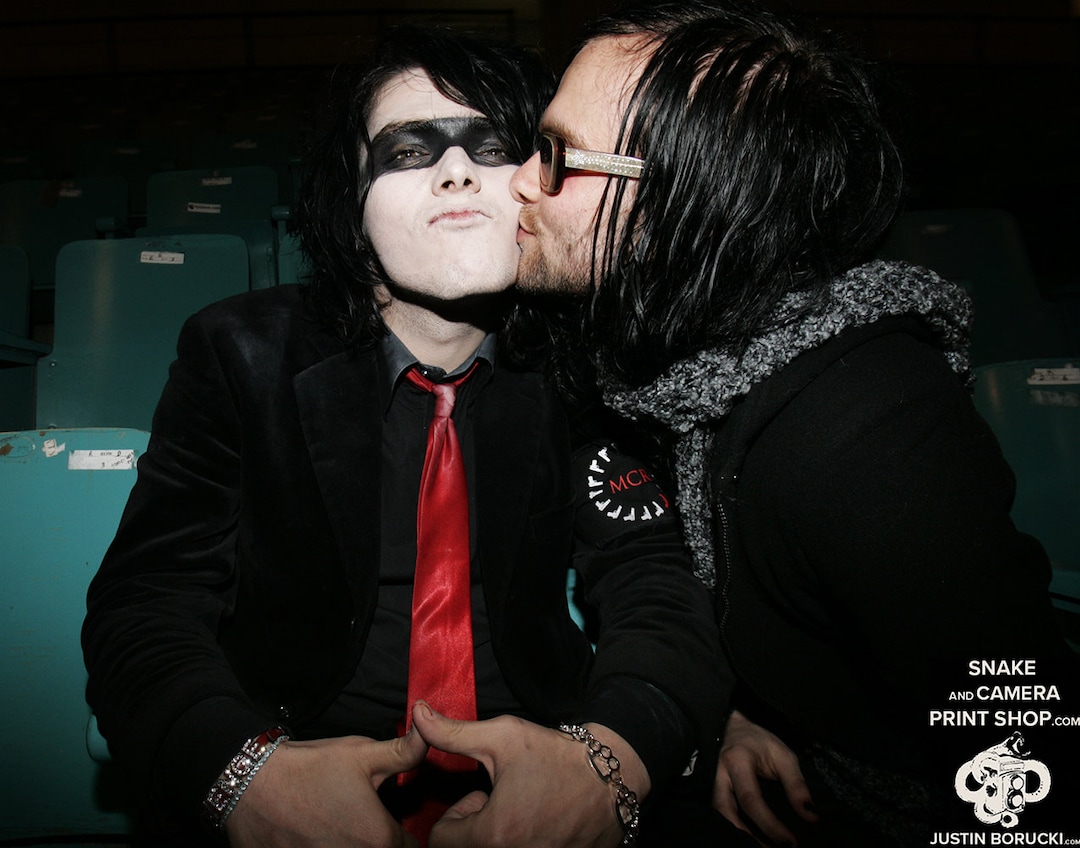Gerard Way & Bert McCracken: The Fallout Explained
What happens when two of the most influential voices in emo music history, Gerard Way of My Chemical Romance and Bert McCracken of The Used, experience a friendship that, while initially close, ultimately fractured?
The story of Gerard Way and Bert McCracken is a complex narrative of shared experiences, artistic collaboration, and the diverging paths that life can take, highlighting the challenges of maintaining relationships amid personal struggles and the relentless demands of the music industry.
Their connection, forged in the whirlwind of touring and creative exploration, was once a powerful force. Gerard Way, in reflections on their time together, described a bond akin to that of cellmates, navigating the unpredictable landscapes of the road together. "Bert was like a tour guide for me," Way recalls, painting a picture of a dynamic where McCracken, a figure of influence, provided guidance and belief in Way's burgeoning artistic vision. This era of camaraderie, fueled by mutual support and shared experiences, saw the two artists rise to prominence, each leaving an indelible mark on the emo music scene.
The intimacy of their relationship is further illuminated by anecdotes and statements that provide glimpses into their personal lives. Instances of creative collaboration, like their memorable performance of a Queen and David Bowie medley in Niagara Falls, NY for the MTV2 $2 Bill show, released on April 12, 2005, underscore the depth of their artistic bond. The proceeds from this cover song, a testament to their collective influence, went towards relief efforts for the 2004 Boxing Day Tsunami, revealing a shared commitment to broader social causes. These moments, however, stand in stark contrast to the later revelations of discord that would eventually reshape their relationship.
The cracks in their friendship began to surface as their lives evolved. While Gerard Way found himself on a path towards sobriety and personal growth, Bert McCracken struggled with different challenges. This divergence in their journeys created a chasm, leading to the inevitable need for distance. "Gerard got clean and Bert was not," as one observer succinctly put it. The complexities of such situations are immense, often demanding difficult choices to protect personal well-being. In a world where enablers can unwittingly impede recovery, the necessity of severing ties, however painful, became paramount.
In a recent interview, Bert McCracken unexpectedly acknowledged the rift, revealing that he and Way no longer speak. While the details surrounding their falling out remain somewhat veiled, the situation speaks volumes about the profound impact of personal choices and the fragility of even the most robust relationships. The narrative hints at underlying issues linked to substance use, with sources suggesting this was a critical factor in their separation. The act of distancing oneself from those who might hinder recovery is a common but challenging step in the journey towards health and stability.
The complexities of their relationship are also highlighted by the creative endeavors they shared. The two were intertwined in projects and performances, reflecting a shared passion for music. In early production of the song, a video shows Bert discussing the song which he describes as being about someone with short blonde hair; at this time, Gerard Way had his signature bleached blonde hair, aligning the song's subject with their reality.
The impact of their separation is evident in both their personal and professional lives. The distance between them serves as a reminder of how the choices made on the individual level can reshape the nature of even the most close and supportive bonds. The legacy of their creative collaborations, however, continues to resonate, demonstrating the enduring power of their individual talents and the potent synergy they once achieved. The shared experiences, the artistic collaborations, and the ultimate divergence of their paths all paint a picture of two artists navigating the turbulent landscape of the music industry and life's challenges, their stories echoing across generations of music fans.
| Information Category | Gerard Way | Bert McCracken |
|---|---|---|
| Full Name | Gerard Arthur Way | Bertram Thomas McCracken |
| Birthdate | April 9, 1977 | December 26, 1982 |
| Birthplace | Summit, New Jersey, USA | Provo, Utah, USA |
| Known For | Lead singer of My Chemical Romance, Comic book writer | Lead singer of The Used |
| Musical Style | Emo, Rock, Alternative Rock | Emo, Post-Hardcore, Alternative Rock |
| Key Albums/Work | I Brought You My Bullets, You Brought Me Your Love Three Cheers for Sweet Revenge The Black Parade Danger Days: The True Lives of the Fabulous Killjoys | The Used In Love and Death Lies for the Liars Vulnerable |
| Personal Life | Married to Lyn-Z (bassist for Mindless Self Indulgence). Has one daughter. | Married to Quinn Allman. |
| Current Status | Active, still making music and writing comics. | Active, continues to tour and release music with The Used. |
| Website (Reference) | My Chemical Romance Official Site | The Used Official Site |
Their story is a reminder of the complex nature of friendships, creative partnerships, and the divergent paths individuals can take. As they continue their artistic endeavors separately, their impact on the emo music scene endures, reminding us of their collaborative moments, personal trials, and the enduring power of their music.



